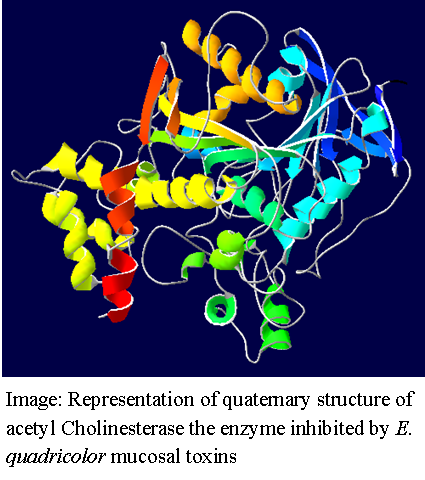Toxins
The toxins utilized by Cnidaria, including Actiniaria, range from neurotoxins injected through nematocysts or cytolytic toxins associated with mucus lining the tentacle epidermis (Mebs 2009). Neurotoxin used by E. quadricolor most likely paralyze prey when fired from nematocysts situated in the tentacle epidermis or the gastrodermis of pharynx and mestentries (Mebs 2009). One such toxin, an Acetyl Cholinesterase Inhibitor has recently been isolated and characterized. This toxin prevents acetylcholinesterase enzyme from breaking down acetylcholine, causing multiple symptoms including prolonged muscle contractions (Gomaa et al 2013).

Cytolytic toxins are used predominantly for defense and commonly containing haemolysins and icthyotoxins (Samejima et al 2000). These toxins are lethal to fish, causing cell lysis and the complete breakdown ofgill physiological function (Samejima et al 2000). Cytolosin taken from Heteractis magnifica anemone mucus secretions where shown to be highly toxic to fish even when strongly diluted. Genetic comparison with E. quadricolor revealed a high degree of homology indicating a high degree of toxicity to fish is expected for this anemone also (Samejima et al 2000). |